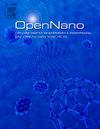十字路口的微生物纳米技术:生态友好合成、农业应用和人工智能驱动的真菌衍生纳米颗粒风险缓解
Q2 Pharmacology, Toxicology and Pharmaceutics
引用次数: 0
摘要
基于真菌的纳米技术在农业、环境清理和生物技术领域正成为一种有前途的可持续方法。由真菌产生的纳米颗粒被称为真菌纳米颗粒,提供了一种更环保的合成方法,同时具有良好的稳定性和很强的生物活性。然而,它们越来越多的使用引起了人们对可能的环境风险和长期影响的担忧。这篇综述重点介绍了生态友好型纳米真菌生产的最新进展,以及它们在支持植物生长、改善养分吸收和增强对胁迫和疾病的抵抗力方面的潜力。虽然少量的这些颗粒可能有帮助,但高剂量会导致有害的影响,如氧化应激和对植物DNA的损害。与植物或细菌制造的纳米颗粒相比,真菌衍生的颗粒通常更稳定,更容易生产,尽管它们仍然存在类似的安全问题。这篇综述独特地将真菌纳米生物技术与人工智能驱动的毒性预测和基于组学的途径映射联系起来,这是一种综合方法,为减少生态影响的精确真菌纳米技术奠定了基础。本文章由计算机程序翻译,如有差异,请以英文原文为准。
Myco-nanotechnology at the crossroads: eco-friendly synthesis, agricultural applications, and AI-driven risk mitigation of fungal-derived nanoparticles
Fungal-based nanotechnology is emerging as a promising and sustainable approach in agriculture, environmental cleanup, and biotechnology. Nanoparticles produced by fungi known as Myco-nanoparticles offer a greener method of synthesis, along with good stability and strong biological activity. However, their increasing use has raised concerns about possible environmental risks and long-term effects. This review highlights recent advances in the eco-friendly production of Myco-nanoparticles and their potential to support plant growth, improve nutrient uptake, and boost resistance to stress and disease. While small amounts of these particles may be helpful, higher doses can lead to harmful effects such as oxidative stress and damage to plant DNA. Compared to nanoparticles made by plants or bacteria, fungal-derived particles are often more stable and easier to produce, though they still pose similar safety concerns. This review uniquely connects fungal nanobiotechnology with AI-driven toxicity prediction and omics-based pathway mapping an integrated approach that lays the groundwork for precision myconanotechnology with reduced ecological impact.
求助全文
通过发布文献求助,成功后即可免费获取论文全文。
去求助
来源期刊

OpenNano
Medicine-Pharmacology (medical)
CiteScore
4.10
自引率
0.00%
发文量
63
审稿时长
50 days
期刊介绍:
OpenNano is an internationally peer-reviewed and open access journal publishing high-quality review articles and original research papers on the burgeoning area of nanopharmaceutics and nanosized delivery systems for drugs, genes, and imaging agents. The Journal publishes basic, translational and clinical research as well as methodological papers and aims to bring together chemists, biochemists, cell biologists, material scientists, pharmaceutical scientists, pharmacologists, clinicians and all others working in this exciting and challenging area.
 求助内容:
求助内容: 应助结果提醒方式:
应助结果提醒方式:


